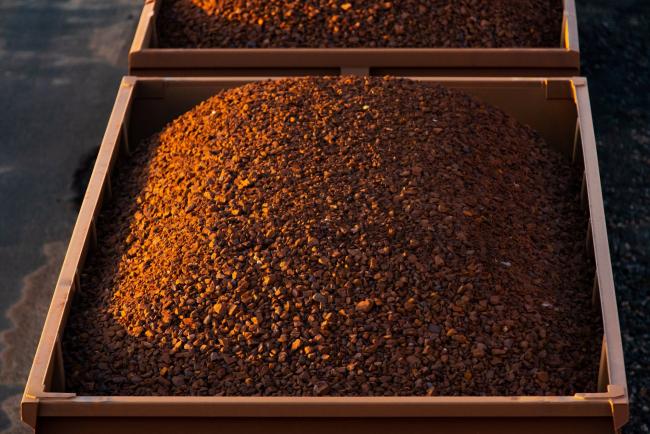(Bloomberg) -- Iron ore has gone from high-flier to sinking star in a matter of weeks. The commodity that lit up the first half with a stunning rally dropped back below $100 a ton as supplies pick up, mills’ profitability falls and investors dump raw materials amid the escalating trade war.
Most-active futures in Singapore, which retreated 10% last week, lost as much as 5.3% to $97.65 a ton, while the contract on the Dalian Commodity Exchange sank further after dropping into bear market territory. Miners’ shares fell.
Iron ore’s fortunes have shifted as the drivers that aided first-half gains -- a supply squeeze coupled with booming demand -- have weakened. Brazil’s Vale SA has been restoring more capacity after its dam burst, with exports rebounding. At the same time there are headwinds to consumption in China as the trade war rumbles on, with a gauge of mills’ profitability turning negative, and the yuan sinking beyond 7 per dollar for the first time since 2008.
Iron ore is “past its peak pricing after the Vale event this year sent it into the clouds,” David Lennox, an analyst at Fat Prophets, said from Sydney. The yuan’s drop “feeds into the concerns about economic growth,” which are ultimately driven by uncertainty around U.S.-China trade relations, he said.
The escalating trade war between Washington and Beijing has dented investors’ appetite for raw materials, and the rise in tensions comes on the heels of data highlighting a manufacturing slowdown in key markets. Global steel output dropped in June on-month, with declines seen in nations including China, Germany, the U.S., Russia and India, according to the World Steel Association.
Ore for September was 5.2% lower at $97.80 a ton in Singapore at 11:24 a.m., heading for the lowest close since June 10. Benchmark spot material has also suffered as the negatives stacked up, collapsing to $107.65 a ton on Friday. That’s down from a five-year high of $127.15 last month.
Bearish Signals
Among recent market signals:
- Port inventories of ore in China expanded 1.5% to 121.05 million tons last week, rising for a third week, according to Shanghai SteelHome E-Commerce Co. Holdings of material from Australia and Brazil both climbed, with ore from the South American nation rising 5%.
- Shipments from Brazil climbed to 34.3 million tons last month, according to government figures. That’s up 17% from June, and the highest total this year. Vale said it expects a better second half.
- A Bloomberg gauge of profitability at mainland blast furnace operators has turned negative, dropping to the lowest level since 2017. China accounts for more than half of global steel supply.
- Both banks and ore users have said they expect prices to ease. Among forecasters, Morgan Stanley (NYSE:MS) sees $90 in the fourth quarter, saying Chinese demand will gradually retreat while supplies gain.
- Declines in futures in Singapore and Dalian have been given added impetus as markets are backwardated, with lower prices further out, so rolls between contracts as interest and volumes shift forward amplify moves in a falling market.
